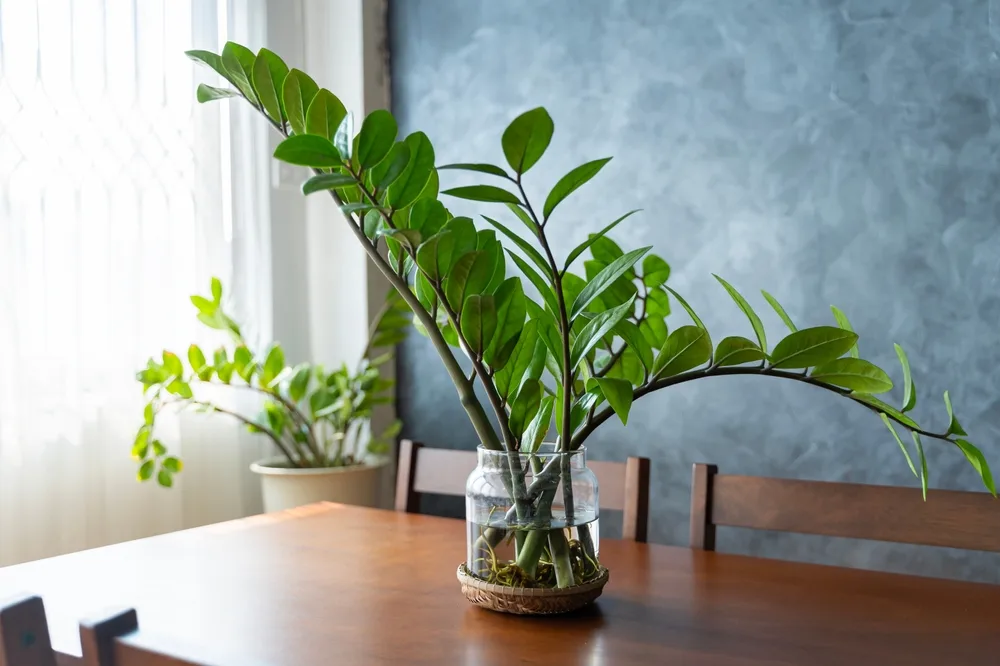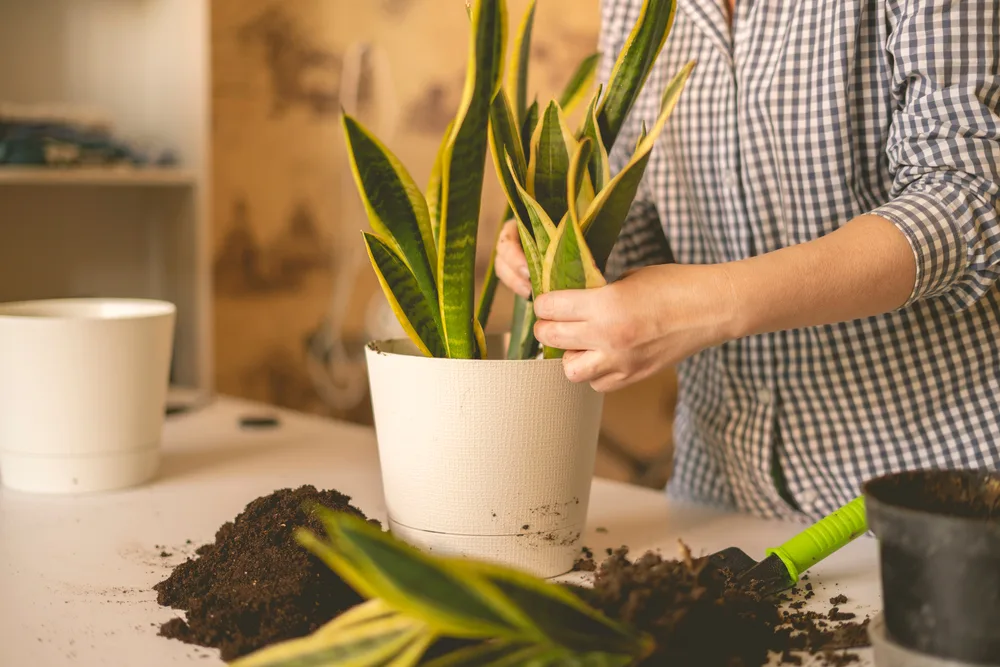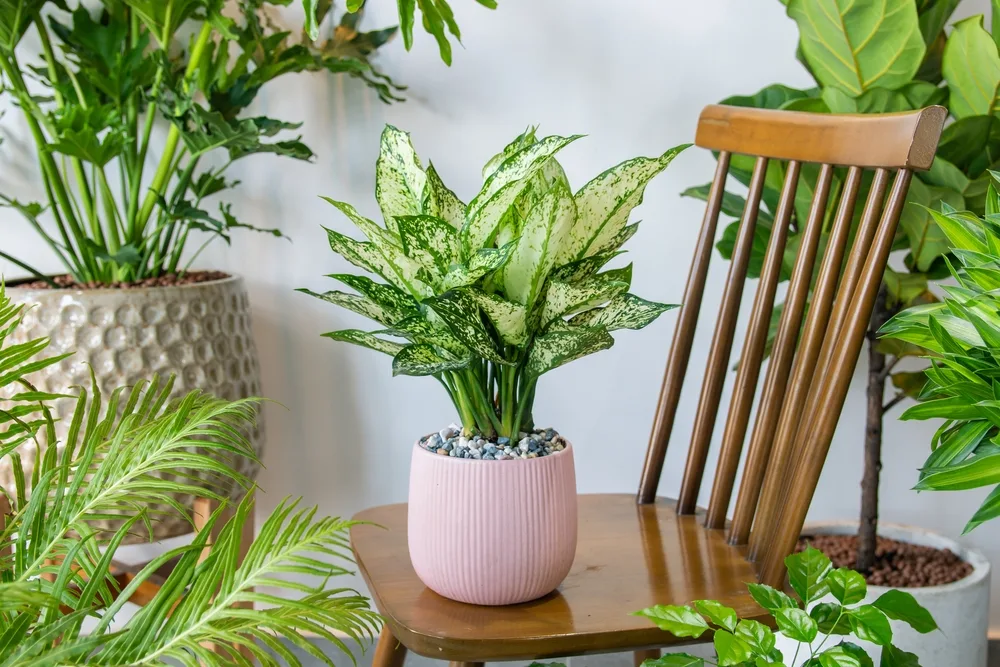Houseplants can transform your garden during the summer months, providing vibrant greenery and fresh air. Here are ten resilient houseplants that thrive outside in the warmer months:
1. ZZ Plant (Zamioculcas zamiifolia)

The ZZ Plant is known for its shiny, dark green leaves and exceptional tolerance to neglect. Place it in a shaded area and bring it back indoors when temperatures fall below 50°F (10°C).
2. Spider Plant (Chlorophytum comosum)
Spider Plants are perfect for hanging baskets outdoors. Their cascading green and white striped leaves add a touch of elegance. Ensure they are kept in bright, indirect light and bring them indoors before the cold sets in.
3. Philodendron (Philodendron hederaceum)
This fast-growing vine with heart-shaped leaves can flourish in various light conditions. Keep it in its pot outside when temperatures are consistently above 60°F (15.5°C), and return it inside before temperatures drop.
4. Snake Plant (Sansevieria trifasciata)

With its stiff, upright leaves, the Snake Plant is highly resilient. It can handle different light conditions and minimal care. Move it outside in its pot once night temperatures stay above 50°F (10°C).
5. Jade Plant (Crassula ovata)
This succulent shrub loves bright light and dry conditions. Gradually introduce it to outdoor sunlight and bring it back indoors when nighttime temperatures dip below 50°F (10°C).
6. Peace Lily (Spathiphyllum)
Peace Lilies thrive in shady, humid outdoor spots during summer. Their dark green leaves and white blooms make them a beautiful addition to your garden. Keep them outside once temperatures are above 60°F (15.5°C), but return them indoors when it cools down.
7. Chinese Evergreen (Aglaonema modestum)

With its patterned leaves, the Chinese Evergreen does well in both bright, indirect light indoors and shaded areas outdoors. Move it outside when temperatures are stable above 60°F and bring it back inside before it gets too cold.
8. Ponytail Palm (Beaucarnea recurvata)
This plant has long, drooping leaves and tolerates both indoor and outdoor environments. Place it outside when temperatures are consistently above 60°F (15.5°C) and bring it back inside before temperatures drop.
9. Pothos (Epipremnum aureum)
Pothos, with its heart-shaped leaves, is adaptable and easy to care for. It can be placed outdoors once temperatures are above 60°F (15.5°C). Ensure it is brought back indoors before the weather gets chilly.
10. Boston Fern (Nephrolepis exaltata)
The Boston Fern, with its feathery fronds, prefers shady and humid conditions. Move it outside once temperatures exceed 60°F and bring it back indoors before the temperature drops below 50°F at night.
Preparing Your Plants for Outdoors
Before moving your houseplants outside, follow these steps:
- Gradual Acclimatization: Start by placing plants outside for a few hours each day, gradually increasing their time outdoors.
- Inspect for Pests: Check and treat any pest issues before moving plants outside.
- Repot if Necessary: Ensure your plants have enough room to grow by repotting them if needed.
- Prune and Clean: Remove any dead leaves and clean the foliage.
- Adjust Watering: Water thoroughly before moving plants outdoors.
- Fertilize: Use a balanced, slow-release fertilizer to support growth.
Protecting Your Plants Outdoors
- Avoid Direct Sunlight Initially: Gradually introduce your plants to direct sunlight to prevent leaf burn.
- Monitor Watering Needs: Outdoor conditions may dry out soil faster; water as needed.
- Protect from Extreme Weather: Move plants to sheltered spots during strong winds, heavy rain, or hail.
- Check for Pests Regularly: Inspect plants often and treat any pest issues promptly.
- Use Pot Feet: Elevate pots to improve drainage and prevent root rot.
- Adjust Fertilization: Fertilize based on plant growth and outdoor conditions.
By following these tips, you can enjoy the beauty of your houseplants both indoors and out. Happy gardening!
